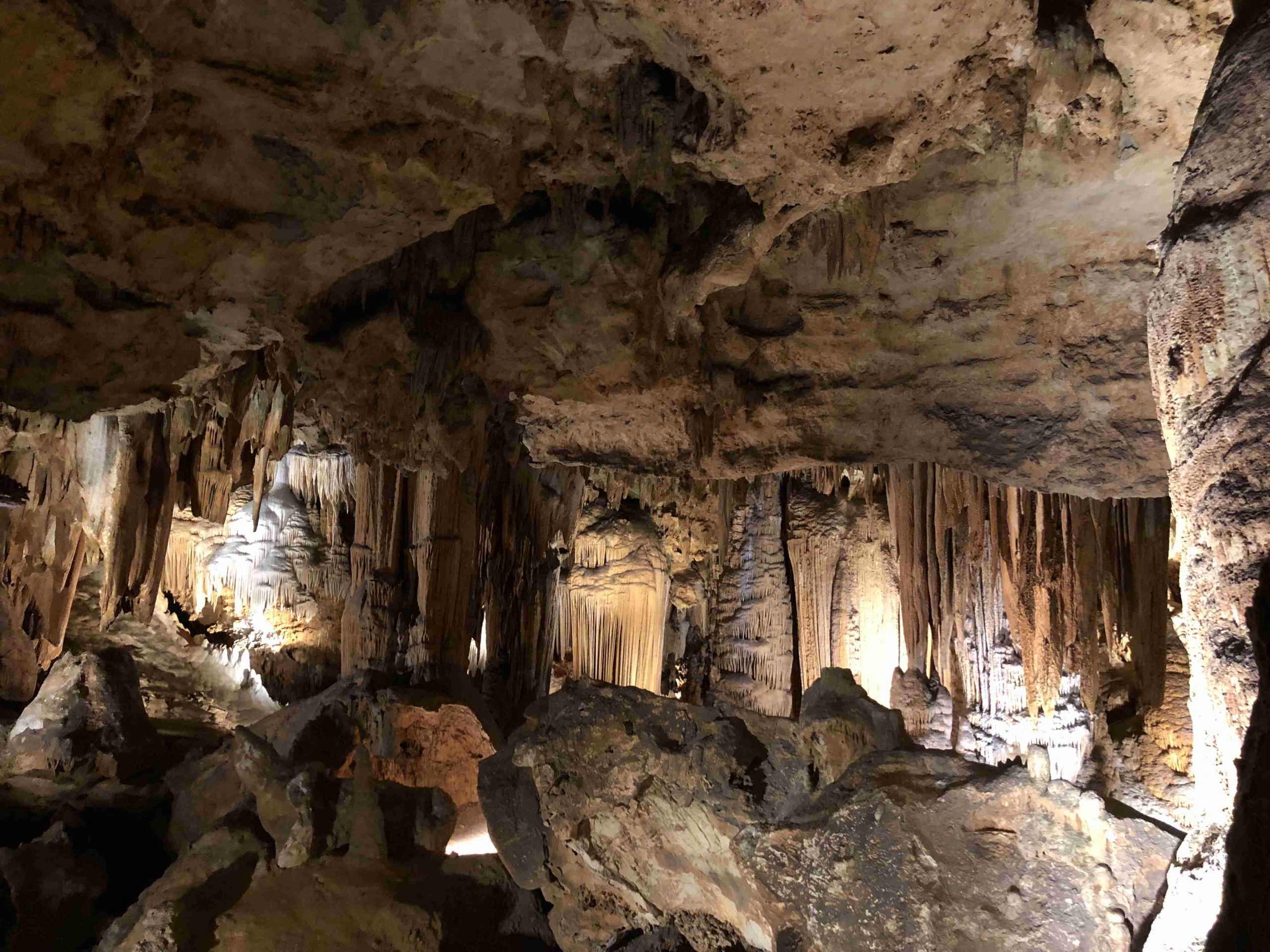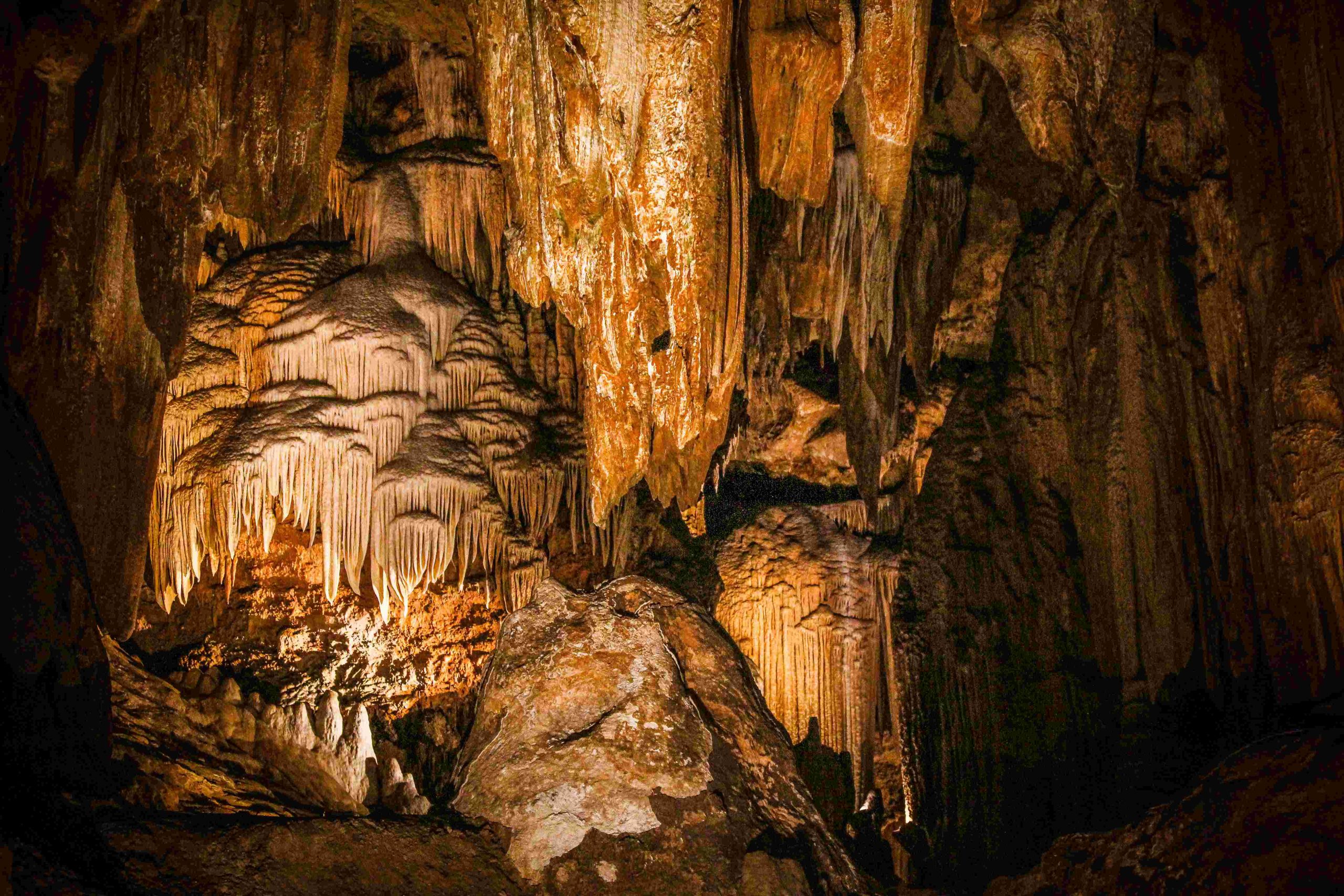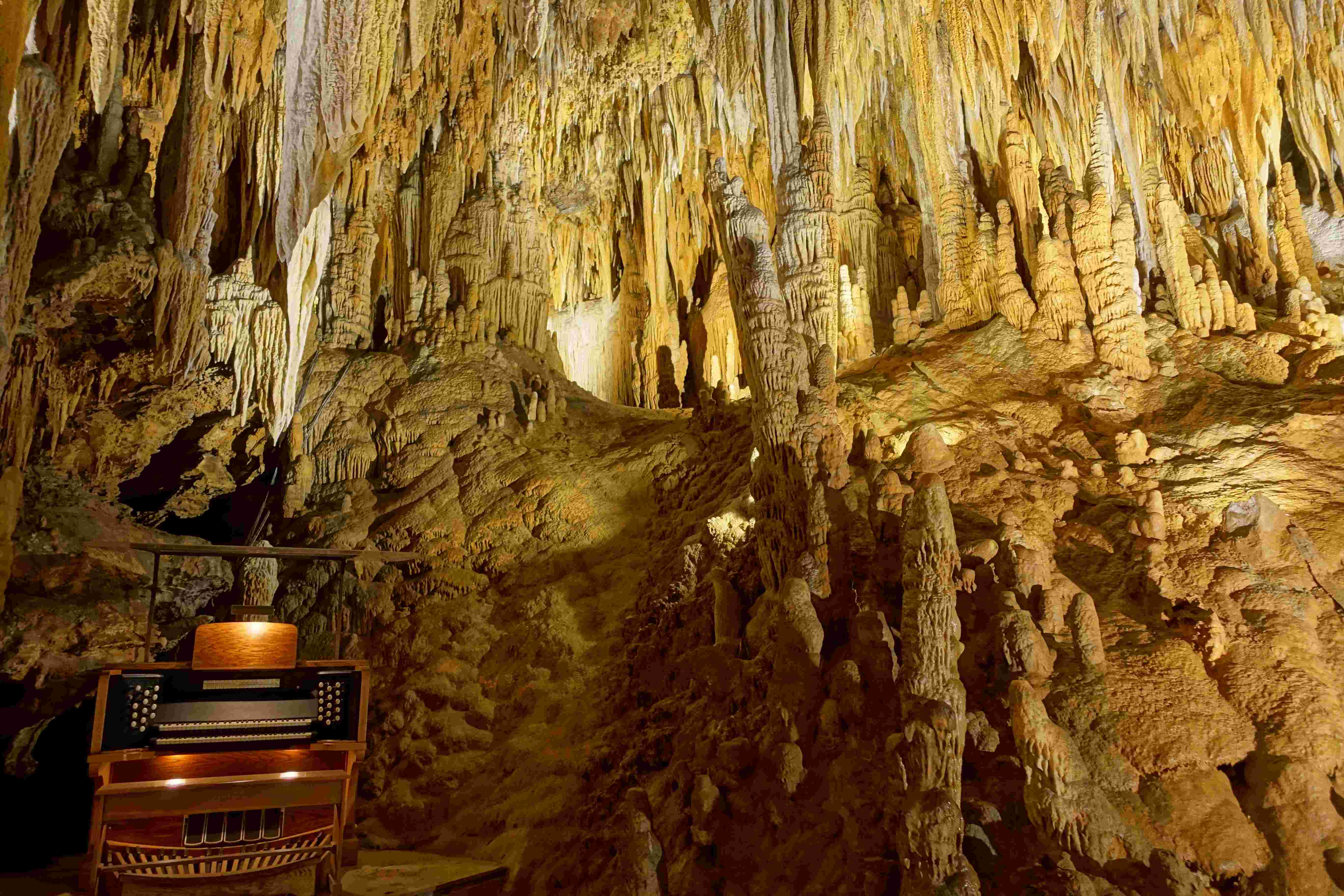Luray Caverns, located in Virginia’s Shenandoah Valley, is a remarkable underground world of natural wonders. The caverns feature an extensive collection of crystal formations, primarily composed of calcite, a crystalline form of limestone. These formations, including stalactites, stalagmites, flowstone, and draperies, have been developing for millions of years, creating a breathtaking subterranean landscape. The Luray Caverns museum showcases these natural crystal formations, offering visitors a unique opportunity to explore and learn about the geological marvels hidden beneath the Earth’s surface.
What Types of Crystals Can Be Found in Luray Caverns?

The Luray Caverns boast an impressive array of crystal formations, each with its own unique characteristics:
- Stalactites: These icicle-like formations hang from the ceiling, some exceeding 50 feet in length.
- Stalagmites: Rising from the cave floor, these formations can reach impressive heights.
- Columns: Formed when stalactites and stalagmites meet, creating massive pillars.
- Flowstone: Smooth, sheet-like deposits created by water trickling down surfaces.
- Draperies: Thin, curtain-like formations that resemble folded fabric.
The colors of these formations vary due to mineral impurities:
- White: Pure calcite
- Red and Yellow: Iron and iron-stained clays
- Black: Manganese dioxide
- Blue and Green: Copper compounds
What Are Some Notable Crystal Formations in Luray Caverns?

Luray Caverns features several remarkable crystal formations that have become iconic attractions:
- The Double Column: Two fluted pillars standing 25 feet and 60 feet high respectively.
- Empress Column: A 35-foot high rose-colored stalagmite.
- Pluto’s Ghost: A striking 45-foot white column.
- Brands Cascade: A massive 40-foot high and 30-foot wide wax-like white formation.
- Saracen’s Tent: A beautiful example of flowstone drapery.
- Titania’s Veil: Another stunning sheet-like mineral deposit.
How Old Are the Crystal Formations in Luray Caverns?
The geological history of Luray Caverns is fascinating:
- The caverns began forming during the Tertiary Period, approximately 66 to 2.6 million years ago.
- The oldest formations in the caverns are estimated to be around 7 million years old.
- The caverns are still active, with new deposits accumulating at a rate of about one cubic inch every 120 years.
What Can Visitors Expect from a Luray Caverns Crystal Tour?
A tour of Luray Caverns offers visitors a unique experience:
- Duration: The self-guided tour typically takes 1 to 1.5 hours.
- Distance: Covers a 1.25-mile paved walkway.
- Depth: Most of the tour is about 80 feet below the surface.
- Temperature: A constant 54 degrees Fahrenheit with high humidity.
| Tour Details | Information |
|---|---|
| Admission (Adults) | $34 |
| Admission (Seniors) | $32 |
| Admission (Children 6-12) | $17 |
| Children under 6 | Free |
| Operating Hours | Typically 9 AM to 5 PM or later (seasonal variations) |
What Makes Luray Caverns Unique Among Cave Systems?
Luray Caverns stands out for several reasons:
- The Great Stalacpipe Organ: The world’s largest underground musical instrument, using stalactites to produce music.
- Dream Lake: A shallow pool that creates a perfect mirror image of the ceiling formations.
- Extensive Formation Variety: The caverns showcase a wide range of crystal formations in various sizes and colors.
- Accessibility: Well-lighted, paved walkways make most of the caverns accessible to visitors.
- Active Cave System: Ongoing formation of new deposits allows visitors to witness a living geological process.
How Does Luray Caverns Contribute to Geological Education?
While not a traditional museum, Luray Caverns serves as an invaluable educational resource:
- Visitors can observe firsthand the results of millions of years of geological processes.
- The caverns provide a tangible example of how water erosion shapes underground landscapes.
- The various crystal formations demonstrate the effects of different mineral compositions on color and structure.
- Guided tours offer in-depth explanations of the caverns’ formation and ongoing geological processes.
What Conservation Efforts Are in Place at Luray Caverns?
Preserving the delicate ecosystem of Luray Caverns is crucial:
- Controlled Access: Visitor numbers are managed to minimize impact on the cave environment.
- Climate Control: Measures are in place to maintain the caverns’ natural temperature and humidity.
- Lighting: Special lighting is used to prevent algae growth while showcasing the formations.
- Education: Visitors are educated on the importance of not touching or disturbing the formations.
- Ongoing Research: Scientific studies continue to enhance understanding and preservation efforts.
In conclusion, Luray Caverns Museum Crystals offer a unique glimpse into the underground world of natural crystal formations. From massive columns to delicate draperies, the caverns showcase the incredible diversity of calcite formations. The ongoing geological processes and careful preservation efforts ensure that this natural wonder will continue to educate and inspire visitors for generations to come.
References:
1. Wikipedia – Luray Caverns
2. Our Breathing Planet – Luray Caverns
3. Camp Brood – 10 Questions Everyone Asks About Luray Caverns Shenandoah Valley

